Punchdrunk's Felix Barrett on the immersive pioneer's greatest hits: 'Always change the rules as you go'

Felix Barrett is the artistic director of Punchdrunk, the pioneering theatre company that really sent immersive theatre mainstream with a series of acclaimed shows over more than two decades. Here he talks about the company’s key shows...
Masque of the Red Death
Battersea Arts Centre (2007)

We had done a couple of big shows in huge derelict spaces. Faust had been in an old sorting office in Wapping and we gratefully had the backing of the National. I think Tom Morris introduced us to his old stomping ground at the Battersea Arts Centre, and said the next radical thing to do, rather than taking over a disused space would be to reinvent a working space.
So we had the different challenge of making a place that was familiar to a lot of audiences completely unfamiliar, to fill it with ghosts rather than activate it with the ghosts of the past.
It was an incredible space. David Jubb, then artistic director of the BAC, gave us carte blanche to reimagine the space and open up bits backstage, old cupboards that weren’t being used. We were able to reinvent it, knowing it would stay that way and be part of its overall refurbishment. To have that carte blanche was really empowering and remarkable.
We asked for all sorts of things. As it was an Edgar Allen Poe story we said we needed a real fire, so they brought in the chimney sweep. And then we said if we had a fire we needed a cat. So they let us get a black cat, Pluto, which lived there for another 15 years. It was amazing doing something we knew would have legacy.
People would explore the space but we realised they wanted something to tie it all together. BAC had this amazing great hall which we kept back, so we had the thrill of the reveal in the final 20 minutes. I’m a sucker for a proper crescendo and that’s what really crystallised that conceit.
The Borough
Aldeburgh (2013)
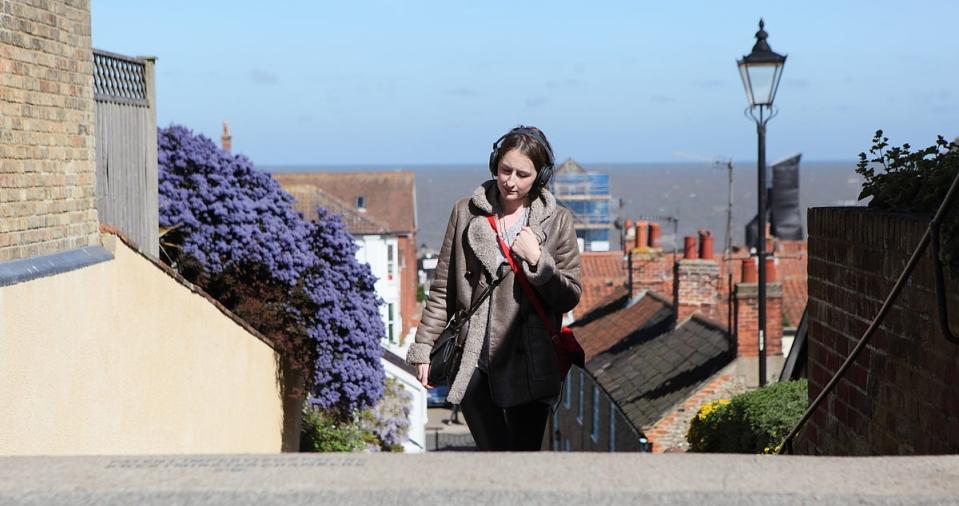
We do large scale work with spectacle. We always try and make the hair stand up on the back of your neck whatever we do, whether for an audience of 600 or an audience of one. This was for an audience of one. Rather than transforming a building, we transformed a town and had a secret cats of 40 hidden among the real hustle and bustle of Aldeburgh.
The one on ones of other shows has always been the distilled form, the raw impact, the emotional sucker punch that we strive for. With The Borough we got to craft that for one audience member at a time using soundtrack. We’ve done multiple headphone projects over the years, that took the scale and impact up. It was amazing to have a whole townscape where the audience didn’t know if that was just a guy walking his dog or a performer. So suddenly there was a cast of hundreds but most were oblivious.
There would be one audience member every five or 10 minutes. Over the past 20 years we’ve done these experiences for small audiences and they’re real gems. They don’t have the scale but they’re real gems. That’s the lineage to Viola’s Room, to scaling up one of these experiences.
The Drowned Man: A Hollywood Fable
31 London Street (2013)
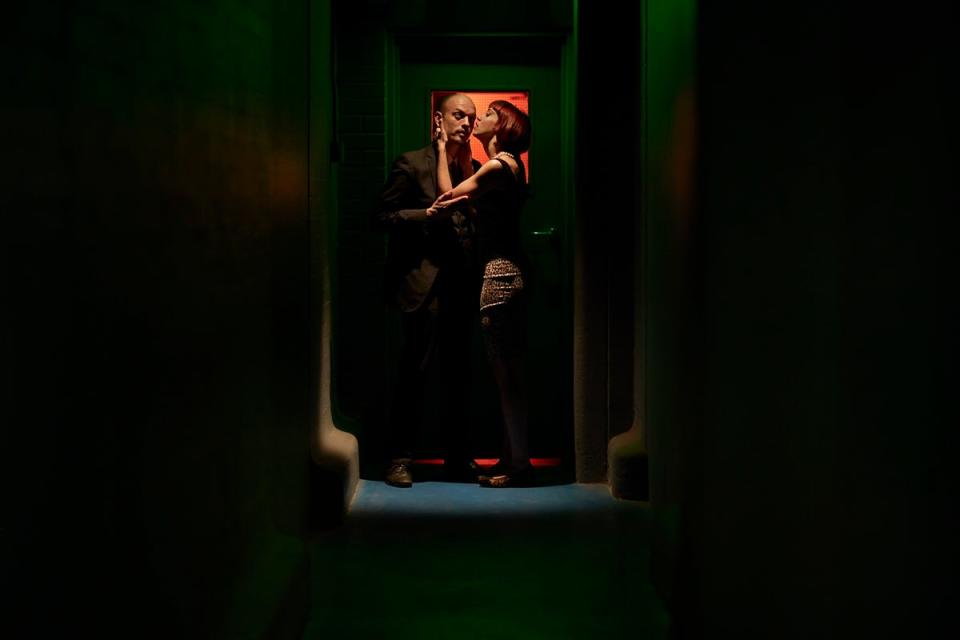
It was in an old sorting office. I remember seeing that building for the first time on January 5 then it opened six months later. From having no idea, walking around it with open eyes to planning, building and rehearsing it, it was all done incredibly quickly and by the skin of our teeth. But it was properly site responsive. It was a glorious rollercoaster.
If an audience knows what’s going to happen next, then why bother doing it? My philosophy is always change the rules as you go, so they’re always on the back foot and have to succumb to it. That’s the best way to experience art, when you’re dragged along by it.
We had been so building dependent. We lost that space to Crossrail so there was always a ticking clock on that one. Every building we’ve used bar now has been demolished. It was a beautiful moment that we found that space in such a central location. It gave us a beautiful propulsion but it took us a long time to find such a large space in London. It pushed us to great things internationally, but in our home town it took us a long time to find a follow up.
The Third Day
Sky Arts (2020)

The original plan was to try and create an immersive TV show. You would watch a TV show and the narrative followed in real time and the lead protagonist, Jude Law, stumbles across a festival happening on the coast of Essex, the audience would be able to get in their car and go to it. It would happen in real time and you could be part of it. There were many years of planning and HBO and Sky were up for it. But we succumbed to Covid.
So we had to pivot in a matter of weeks from an audience of 6,000 on an island to an audience of one, which was the camera, tracking the 12 hours of action. It was a complete experiment, because it became a kind of piece of slow cinema. Jude was in character onscreen for nine hours sold.
We didn’t know what was going to happen. When we started it we knew we couldn’t stop. It was 12 hours of rolling action. Working with Dennis Kelly, the playwright, there were three hours of TV, the live broadcast, then another three hours of TV.
We had an incredible cast and crew and it was exciting to do something by accident that felt like we were breaking ground and doing new things. So much so that we’re planning things that will go back to that territory.
Jude had been a fan of the work, and we got chatting about what we could do together. He was fantastic. He literally had to dig his own grave, in real time, for an hour. The blisters and welts on his hands are all real. It was almost like a piece of live art.
We were delighted with it. It was such an anomaly. It broadcast live on Sky Arts over here and on a digital platform in the US. We discovered that people just put it on and were hooked, and stayed with it for the whole day. All of the chatter, and social media, suddenly it had the same feel as live theatre. It had the jeopardy as they knew they were watching it in real time. It was just on a screen not in a live space.
The Burnt City
One Cartridge Place (2022)
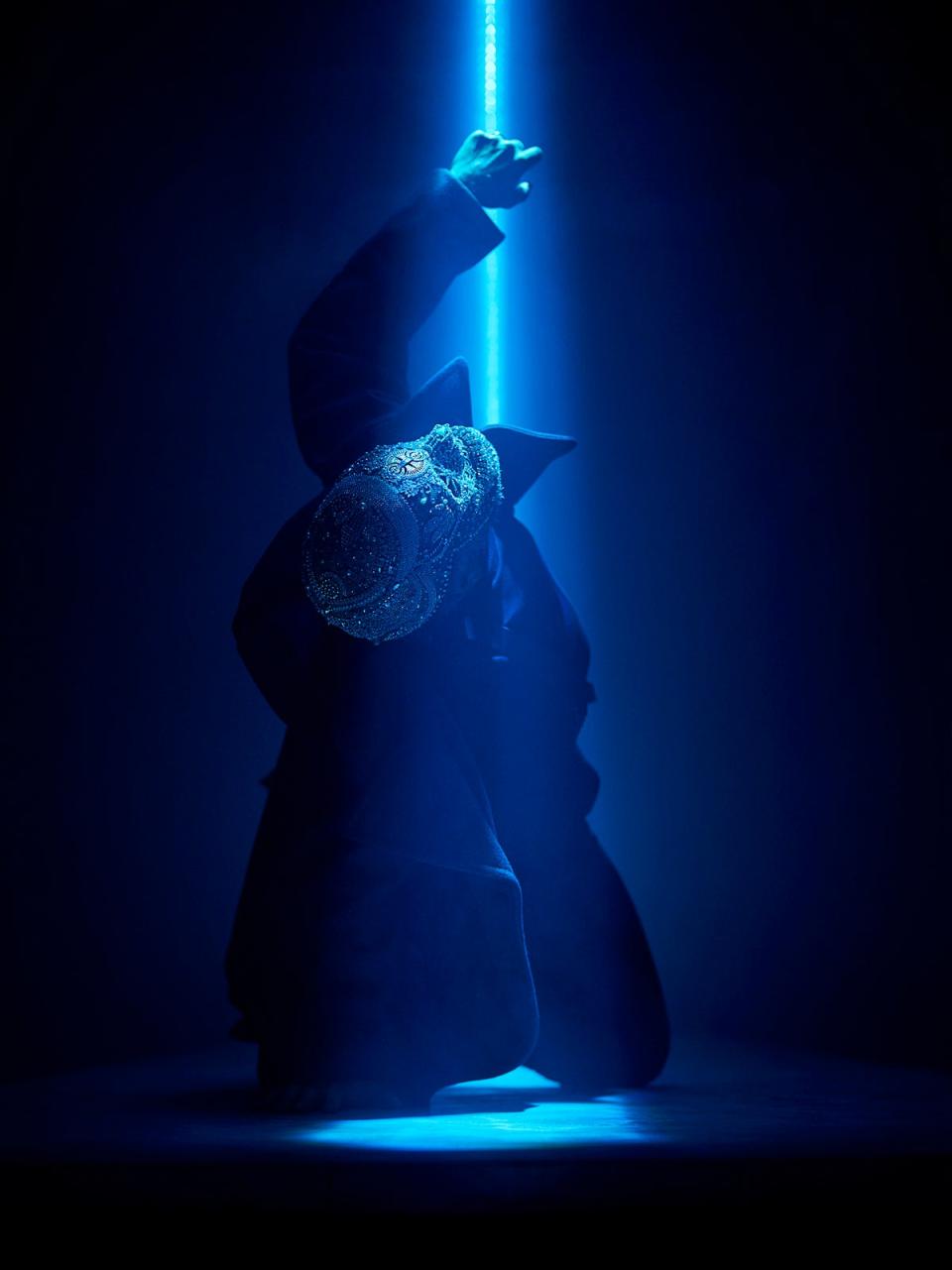
Many shows have fallen though when we’ve found buildings that for whatever reason – asbestos, change of ownership – they go away. So we planned The Burnt City for a different building before The Drowned Man. It was two connected buildings and we knew we wanted to do the Greeks, and do two sides of the same story. The fall of Troy felt perfect, but we lost the building. It should have opened in 2010.
Then post Drowned Man, we did a lot of international work. We realised we’d been nomadic and London is our home and we had a need to put down roots and settle a bit. We had shows running in New York and Shanghai for a very long time, and we wanted that in London, so we started looking for a home.
The Royal Borough of Greenwich were brilliant and offered us Woolwich Arsenal, and by some miracle that was two buildings connected, so we thought we could go back to the show we almost made in Holborn. It was a fortuitous reawakening of an old idea that fit perfectly into the space. There was a stature to it that was larger – the height of it. But the ideas were all there.
We decided to go to a place of purity of just physicality in this show. It was a conscious decision, knowing that in other work the language is coming back. The performers were astonishing to endure that for a year and a half. It gave us the opportunity to launch the building and have our own space finally in our home town. It was a real gift.
Viola’s Room
One Cartridge Place (2024)
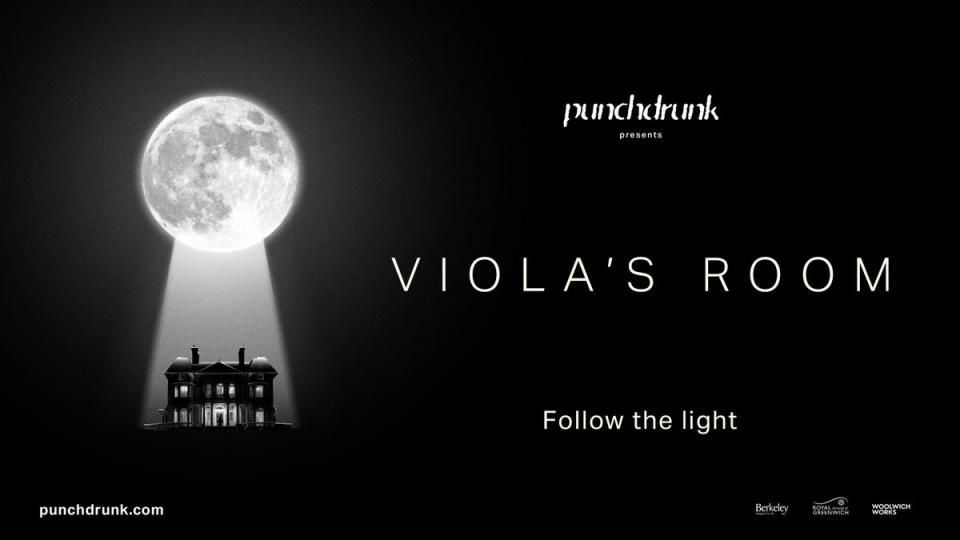
This is the first time we’ve returned to a space. We’ve always done one show and moved on. It’s our 25th anniversary next year – the building is so rich, we thought that if we treated it as our version of an arts centre it has so much. It completely shifted our thinking. We thought, what’s our version of the Southbank Centre with different spaces and environments, and could house different shows simultaneously. It wouldn’t have to be one big show, but multiple smaller ones.
Viola’s Room is on a more discreet scale so allows us to do other stuff simultaneously. We have stuffed planned in the future that will be full-building takeover too. It’s great that audiences will know how to find us, and properly engage with the borough.
It’s described as an audio driven journey for a moonlit fever dream. It draws on the audio driven headphone-based shows we’ve done in the past. It is a narrated bedtime story where you fall inside the dream world. It’s linear, it has text and narrative. It’s deliberately a different flavour bringing something new to the building after The Burnt City. But it has all of our atmosphere, going back to one on ones and pure distilled Punchdrunk moments. It’s basically a larger scale one on one. You can go in alone or up to six people.
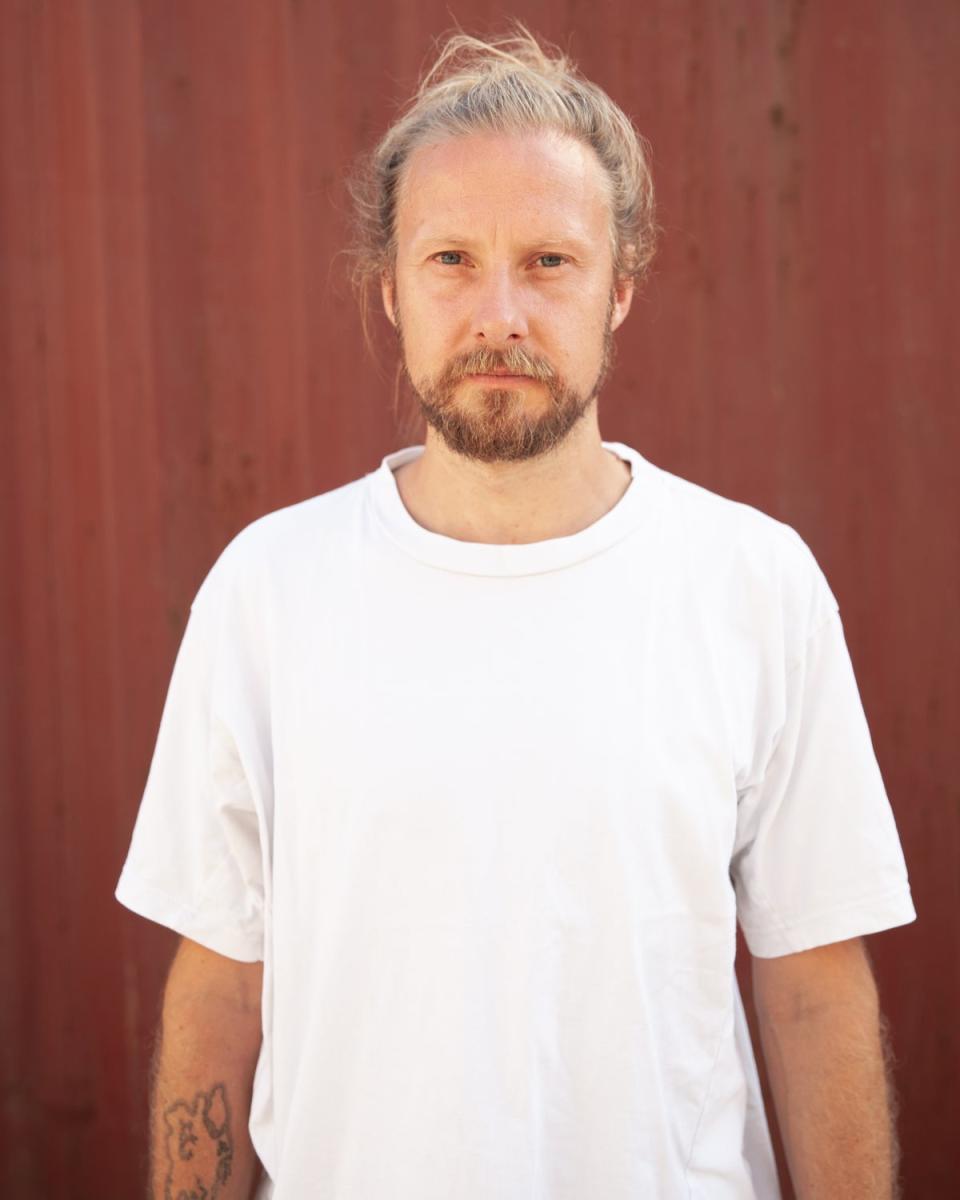
There are no live performers, it doesn’t need it. It’s about the absence of people. It’s a chance for the installation, the sound world, the light and the design to step up. When we’re building a show, one discipline doesn’t pull rank over another. The light is a character, the sound is critical. It’s smaller scale but it will feel just as epic.
In 2002, when I’d just left university and moved back to London. We were trying to find £1000 to do a show and ringing up every borough to see if there was a building we could find for free, someone said we should look at Woolwich Arsenal, so I dutifully popped down. I saw the scale of these giant warehouses, we only had £1,000 and it was derelict. But here we are 24 years later to now be in that incredible vast space as our home, able to plan the next tranche of work is incredible. It gives us the chance to be far more prolific. Rather than having to spend half our year finding the buildings and getting the permits, that’s in place. So all our attention is turned to making work.
What’s really exciting about this next phase is putting far more stuff out there, it’s a real treat.
Viola’s Room opens at One Cartridge Place on June 3; punchdrunk.com

 Yahoo Lifestyle
Yahoo Lifestyle 
